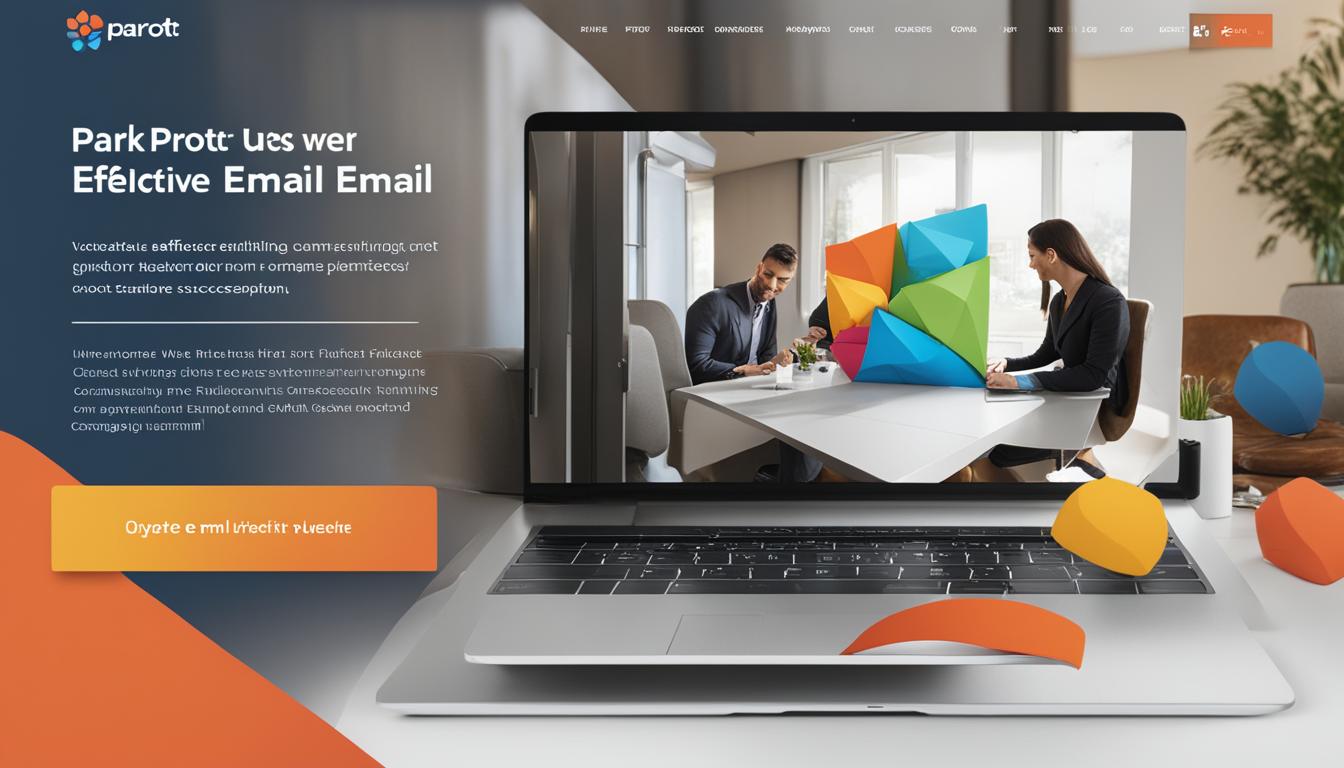We have all faced situations where we had to navigate through a barrage of feedback and improvements, similar to maneuvering through a dense forest. When it comes to addressing performance improvements, crafting the right message is essential, and using an email template can be incredibly helpful in this process.
In this discussion, we'll explore key elements to include in a performance improvement email, sample templates for addressing poor performance, strategies for addressing employee behavior, and the importance of seeking employee feedback.
Whether you're a manager seeking to support your team or an employee looking to enhance your own performance, this topic promises to provide valuable insights and practical guidance.
Key Takeaways
- Use clear and specific language to effectively communicate areas needing improvement and expected standards.
- Maintain a professional tone to convey the importance of performance improvement while fostering a positive work environment.
- Provide support, resources, and specific actionable feedback to assist employees in their improvement efforts.
- Demonstrate care and encouragement by offering assistance, training, and highlighting potential for growth and development.
Crafting the Right Message
Crafting the right message is crucial for effective communication and clarity in our workplace. When it comes to addressing employee performance issues, the language and tone used in crafting messages are essential. A performance improvement email template should be clear, specific, and professional to ensure that the message is effectively conveyed. By using the right language and tone, we can foster a positive work environment and better engage our employees in the performance improvement process.
In crafting the right message, it's important to consider the impact it will have on the team. An email regarding a performance improvement plan (PIP) should provide support and resources for the employee to facilitate their improvement. The message should convey a sense of encouragement and a willingness to help the employee succeed.
Additionally, when communicating about employee performance reviews, the language should be constructive and focused on areas for improvement rather than criticism. By carefully crafting our messages, we can effectively communicate our support for employees' improvement and create a productive work environment.
Key Elements to Include

When structuring a performance improvement email, it is crucial to include specific elements that effectively convey the message and support the employee's growth. Clear communication, setting clear expectations, providing constructive feedback, and offering guidance are key elements to include in a performance improvement email. Here is a table outlining these essential elements:
| Key Elements | Description | Importance |
|---|---|---|
| Clear Communication | Use a clear subject line and a professional greeting to set the tone for the email communication. | Essential for understanding |
| Setting Clear Expectations | Clearly outline the areas needing improvement and the expected standards of performance. | Establishes clarity and focus |
| Constructive Feedback | Provide specific and actionable feedback on areas of improvement, focusing on growth. | Essential for progress |
| Offering Guidance | Offer resources, training, or support to assist team members in their performance improvement. | Demonstrates support and care |
Email Samples for Poor Performance
In our efforts to support professional growth and improvement, addressing poor performance through constructive feedback emails is essential. When drafting email samples for poor performance, it's crucial to ensure clear communication and adherence to performance standards.
Here are key elements to include in such emails:
- Specific Examples: Provide concrete instances of poor performance to illustrate the issue effectively.
- Impact on Goals: Explain how the poor performance is hindering the team or company's success.
- Expectations: Clearly outline the expected performance standards and the need for improvement.
- Support and Guidance: Offer assistance, resources, or training to help the employee succeed.
Addressing Employee Behavior

Improving employee behavior in the workplace is crucial for fostering a positive and productive work environment. Addressing employee behavior effectively is vital to ensure that performance expectations are met. Constructive feedback through email communication can be a powerful tool in addressing employees' poor performance and behavior. It allows for the migration from existing methods to a more streamlined and consistent approach. Providing support and guidance is essential in helping employees understand their areas for improvement. Additional training for a fast and effective improvement process can be beneficial. Effective communication is key in addressing employee behavior, and using email templates for feedback can ensure consistency in the messages conveyed.
| Effective Communication | Constructive Feedback |
|---|---|
| Clearly articulate performance expectations | Provide specific examples of behavior or performance issues |
| Use active listening to understand employee perspectives | Offer support and guidance for improvement |
| Encourage open dialogue | Highlight the potential for additional training and support |
| Establish a collaborative approach | Reinforce positive behavior and improvement |
| Provide timely and consistent feedback | Communicate the consequences of continued poor performance or behavior |
How Can I Adapt Performance Improvement Email Templates for Basho Email Campaigns?
Looking to adapt performance improvement email templates for your Basho email campaigns? With engaging Basho email templates, you can easily tailor your content to resonate with your audience and drive better results. Customize the messaging while maintaining a cohesive brand image to maximize the impact of your email marketing efforts.
Asking for Employee Feedback
Transitioning from addressing employee behavior, we recognize the importance of soliciting employee feedback to drive continuous improvements in the workplace. Here are some key points to consider when asking for employee feedback:
- Timing is crucial: Sending an email after project completion or performance reviews encourages regular feedback and ensures that the experience is fresh in the employee's mind.
- Acknowledge and respond: Promptly responding to negative feedback and acknowledging it fosters open communication. It's important to show that their input is valued and that steps will be taken to address their concerns.
- Commit to improvement: Outline steps to be taken in response to negative feedback. This demonstrates a commitment to improvement and builds trust with employees.
- Integrate feedback loops: Integrating feedback loops into performance improvement and talent acquisition processes can help engage and retain employees. Consider using recruitment software with seamless integration, a cloud-based applicant tracking system, and flexible pricing for a fast response platform from a product to facilitate this integration.
Asking for feedback is a vital component of performance improvement, and by following these steps, organizations can create a culture of open communication and continuous growth.
Frequently Asked Questions
How Do You Write a Performance Improvement Email?
We write performance improvement emails by clearly addressing the specific performance issue, providing actionable steps for improvement, and inviting open discussion. Our goal is to communicate transparently and professionally, emphasizing the importance of timely, constructive feedback for promoting professional growth.
We ensure our email includes a clear subject line, professional greeting, and specific performance feedback. As a formal communication tool, emails provide a formal record and enable asynchronous communication in the workplace.
How Do You Write an Email for Process Improvement?
When writing an email for process improvement, we focus on clarity and specificity. We provide a visual representation of ideas to create a clear understanding. Our language is tailored to an audience seeking mastery, ensuring that the message is precise and actionable.
How Do You Write a Performance Evaluation Email?
We write performance evaluation emails by including specific feedback on areas for improvement, actionable steps for progress, and an invitation for open discussion. Our emails should have a clear subject line, professional greeting, and address specific issues such as missed deadlines, excessive time off, difficulty in receiving feedback, negative attitude, and the need for additional training.
Following up on the Performance Improvement Plan is crucial, and we should seek non-intrusive ways to ask for employee feedback.
How Do You Write a Performance Issue Email?
We write performance issue emails by addressing specific concerns directly and offering actionable steps for improvement.
Our goal is to foster clarity and understanding while promoting accountability and professional growth.
We must send these emails promptly after incidents or performance reviews to drive individual and team excellence.
Our communication should express concern in a structured manner and drive positive work environments for better employee engagement.
Conclusion
As we guide our team members through the performance improvement process, we must remember that it's a journey, not a destination.
Like a gardener nurturing a delicate seedling, we provide the necessary care and support for growth.
With patience, encouragement, and a clear vision, we can cultivate a culture of continuous improvement and success.
Together, we sow the seeds of progress and reap the rewards of a thriving and flourishing team.










